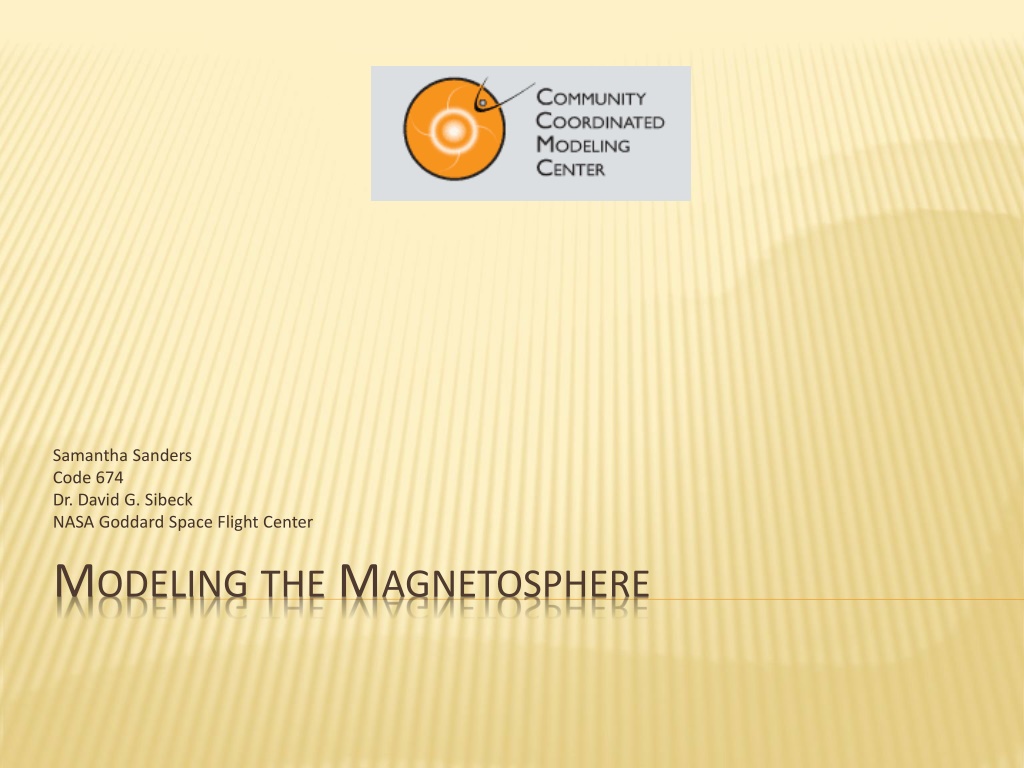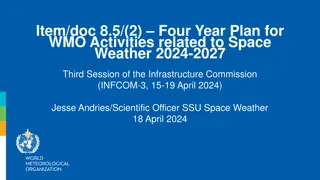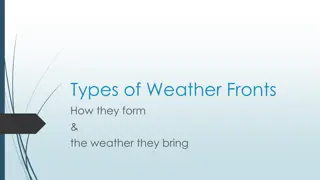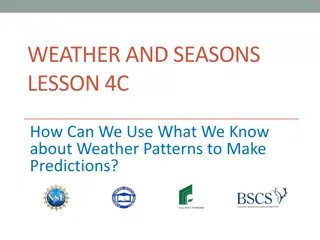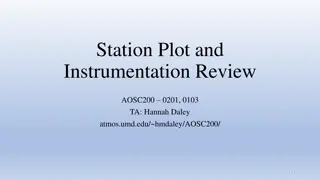Understanding Magnetospheric Models and Space Weather Prediction
Explore the complexities of modeling the interplanetary magnetic field and solar wind velocity to predict space weather using various magnetospheric models. Learn how the CCMC facilitates research and visualizations, and understand the challenges of discrepancies in model predictions impacting the accuracy of space weather forecasts.
Download Presentation

Please find below an Image/Link to download the presentation.
The content on the website is provided AS IS for your information and personal use only. It may not be sold, licensed, or shared on other websites without obtaining consent from the author. Download presentation by click this link. If you encounter any issues during the download, it is possible that the publisher has removed the file from their server.
E N D
Presentation Transcript
Samantha Sanders Code 674 Dr. David G. Sibeck NASA Goddard Space Flight Center MODELING THE MAGNETOSPHERE
WHAT ARE WE MODELING? Interplanetary magnetic field (IMF) How do the forces within it affect space weather?
WHAT ARE WE MODELING? y EARTH z Velocity of solar wind x Many factors affect solar weather orientation Looking for the location of the magnetopause (boundary line) between the magnetosphere and the surrounding plasma Sun s magnetosphere is fluid! ripples, waves, bounces, moves orientation is one of them magnetopause the point
THE CCMC - Provides web-based space weather models for researches to use ultimate goal to help predict space weather - solar, heliospheric, magnetospheric, and ionospheric models with automated requests - produces a visualization - Sample inputs for magnetospheric models
MAGNETOSPHERIC MODELS - VARIATIONS BATS BATS- -R R- -US Upwind-Scheme) SWMF/BATS SWMF/BATS- -R R- -US with RCM ModelinG Framework/BATSRUS with Rice Convection Model) LFM LFM- -MIX MIX (Lyon-Fedder-Mobarry model) US (Block-Adaptive-Tree-Solarwind-Roe- US with RCM (Space Weather Goal understand discrepancies between the models to improve prediction accuracy and efficiency
MAGNETOSPHERIC MODELS SAMPLE VISUALIZATIONS SWMF separate visual BATS-R-US visual LFM visual
USING THE MODELS * The various models are based on different computational modules Example, SWMF/BATS-R-US model
PREDICTION DILEMMAS Discrepancies in calculating the magnetopause locations between the models could lead to errors in accurately predicting space weather Model comparison submitting multiple runs of sample data
THE SUBMISSIONS - Generate input data - LOTS of input data - two different comparisons one varying solar wind velocity, one adjustingthe magnetic field - watch out for keeping IMF values constant, increase pressure and density of field - watch for each model s variations in predicting magnetopause location based on magnetosphere s behavior
ANALYZING THE RESULTS - COMPARISON Compare model results to each other points on a simple graph Use a line of actual observed data from a typical set Calculated distance of model points from observed points gives margin of error for each model
ANALYZING THE RESULTS - FUTURE Work still to be done! Need more run data to complete a small amount of results won t create a good line to compare with the database of observed features Problems can occur with submissions
ACKNOWLEDGEMENTS Dr. David Gary Sibeck Dr. Masha Kuznetsova The Dayside Science crew Uthra Rao and Mitch Wynyk Diane Cockrell Cori Quirk and the SESI Program
